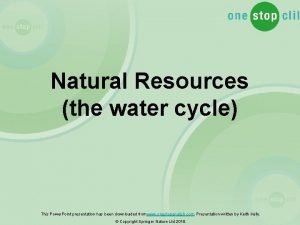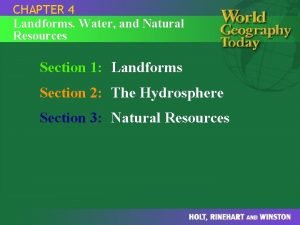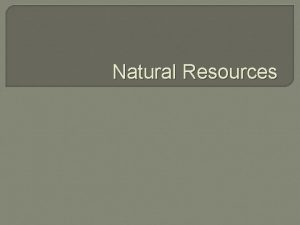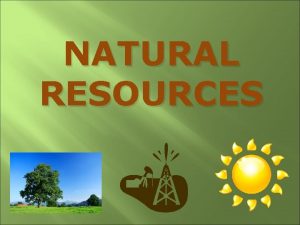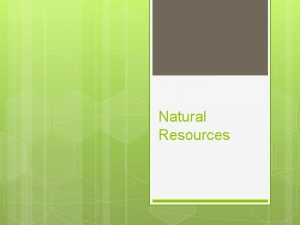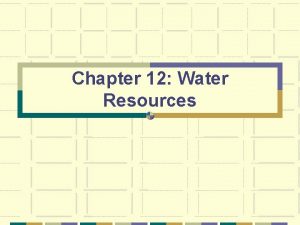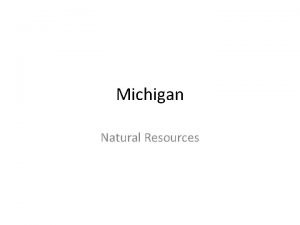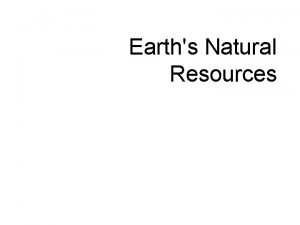Natural Resources the water cycle This Power Point









- Slides: 9

Natural Resources (the water cycle) This Power. Point presentation has been downloaded from www. onestopenglish. com. Presentation written by Keith Kelly. © Copyright Springer Nature Ltd 2018.

First … 1. Do exercise 1 on the worksheet: label the diagram. 2. Do exercise 2 on the worksheet: match the pictures with the correct caption.

Next 3. Look at the following picture slides.

Water is a renewable source. Natures constantly cleans and renews the Earth’s water supply. This is done by a process known as the water cycle. This involves water constantly entering and leaving the atmosphere. It provides plants, people and other land animals with the moisture that is vital for their survival. First, the sun’s heat evaporates seawater and turns it into a gas called water vapour.

The light water vapour rises, cools and condenses into tiny droplets which make up cloud.

Further cooling and condensation result in precipitation (rain, hail, snow, etc. ).

Surface run-off (in the form of rivers) and soakage return most of the water to the sea. Some water is evaporated immediately back into the atmosphere.

Now … 4. Do exercise 3 on the worksheet, match the parts of sentences.

Presentation 5. Use the PPT template to practice talking about the water cycle. In pairs, take turns, one talks the other listens, then swap roles. In groups, use the template to help you prepare a presentation on the water cycle.
 Natural resources water cycle
Natural resources water cycle Water and water and water water
Water and water and water water Chapter 4 landforms water and natural resources
Chapter 4 landforms water and natural resources Power triangle diagram
Power triangle diagram Power bi training powerpoint
Power bi training powerpoint Where can you find groundwater brainpop
Where can you find groundwater brainpop Water cycle the hydrologic cycle
Water cycle the hydrologic cycle Point point power
Point point power What is transformation process
What is transformation process Difference between fixed and variable resources
Difference between fixed and variable resources
